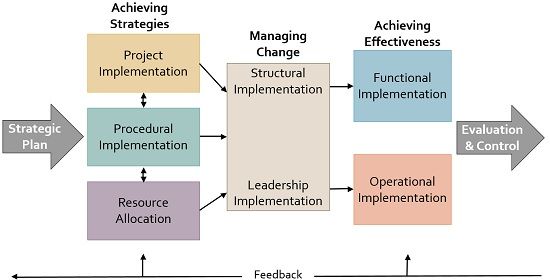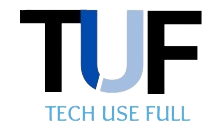Guiding business strategy using facts is an essential process for organizations to make informed decisions and drive success in today’s dynamic market. In a world flooded with data, relying on evidence-based insights is crucial to develop strategies that align with business objectives and anticipate market trends.
This process involves gathering and analyzing relevant data from various sources, including market research and competitive analysis, to uncover valuable insights. By evaluating internal and external factors, such as strengths, weaknesses, opportunities, and threats, businesses can identify areas of improvement and capitalize on emerging opportunities.
Drawing upon these insights, organizations can make informed decisions, create action plans, and monitor progress through data-driven metrics.
Ultimately, leveraging facts in guiding business strategy empowers companies to adapt, innovate, and stay ahead in an ever-evolving business landscape.
Gathering and Analyzing Data

Gathering and analyzing data is a crucial step in guiding business strategy. To make informed decisions, it’s important to identify relevant data sources. These sources can include market research reports, industry publications, customer surveys, and even social media trends.
Quantitative and qualitative data are both valuable in providing a comprehensive view of the market. Quantitative data, such as sales figures and market share percentages, offer concrete numbers that can be analyzed for trends and patterns.
On the other hand, qualitative data, like customer feedback and focus group discussions, provide valuable insights into customer preferences, needs, and opinions.
Market research and competitive analysis play a vital role in gathering data. Market research involves studying target demographics, consumer behavior, and market trends. This information helps businesses understand their audience and identify potential opportunities or threats. Competitive analysis, on the other hand, focuses on studying competitors’ strategies, strengths, weaknesses, and market positioning.
Data analysis tools and techniques are essential in extracting meaningful insights from collected data. These tools can range from simple spreadsheet software to more advanced analytics platforms. By utilizing these tools, businesses can analyze data, visualize trends, and generate reports that facilitate decision-making.
Identifying Business Objectives

Identifying business objectives is a critical aspect of guiding business strategy. It involves defining both short-term and long-term goals that align with the overall company vision.
Short-term goals are specific, measurable targets that can be achieved within a relatively shorter timeframe, typically within a year or less. These goals provide a roadmap for immediate actions and outcomes. Long-term goals, on the other hand, extend beyond the short-term timeframe and represent broader aspirations for the organization’s future. These goals often focus on growth, expansion, or transformation.
Aligning objectives with the overall company vision ensures that all efforts and strategies are in harmony with the organization’s overarching purpose and values.
This alignment brings clarity and consistency to decision-making processes and helps maintain a unified direction across different departments and teams.
Considering industry trends and customer demands is crucial in identifying business objectives. By staying attuned to market dynamics, businesses can anticipate changing customer needs, emerging technologies, and industry disruptions.
This understanding enables organizations to set objectives that are responsive to market demands, capitalize on new opportunities, and mitigate potential risks.
Evaluating Internal and External Factors

Assessing strengths involves identifying the core competencies and advantages that set the organization apart from its competitors. This includes evaluating factors such as unique products or services, strong brand reputation, talented workforce, and efficient operational processes. Understanding these internal strengths allows businesses to leverage them to their advantage.
Identifying weaknesses helps organizations recognize areas that need improvement or strategic intervention. It could be inadequate resources, outdated technology, or operational inefficiencies. Acknowledging weaknesses enables businesses to address them proactively and strengthen their competitive position.
Analyzing market conditions and economic indicators is critical to understanding the external factors that can impact business performance. This includes monitoring industry trends, market demand, customer behavior, and economic factors like inflation rates, interest rates, and consumer spending patterns.
Recognizing potential opportunities is essential for business growth. This involves identifying emerging trends, new market segments, untapped customer needs, or technological advancements that can be leveraged for competitive advantage. Seizing these opportunities requires a proactive approach and a willingness to innovate.
Evaluating threats helps businesses anticipate challenges and mitigate risks. Threats may arise from intense competition, changing regulations, disruptive technologies, or shifting consumer preferences.
Drawing Insights and Making Informed Decisions

Drawing insights and making informed decisions are critical in ensuring business success. By applying data-driven decision-making techniques, organizations can leverage the power of information to guide their strategies.
Data-driven decision-making involves using quantitative and qualitative data to inform business actions. It includes collecting and analyzing relevant data, extracting insights, and using those insights to drive decision-making processes. By relying on data rather than intuition or guesswork, businesses can make informed choices that are based on evidence and analysis.
Identifying patterns, correlations, and trends in the data is essential for drawing meaningful insights. This involves analyzing data sets to uncover relationships between variables, detect patterns over time, and identify trends in customer behavior or market dynamics. By understanding these patterns, businesses can make predictions, optimize processes, and identify areas for improvement.
Considering different scenarios and potential risks allows organizations to anticipate potential outcomes and make contingency plans. This involves analyzing the impact of various factors and assessing the potential risks associated with different courses of action. By considering multiple scenarios, businesses can make proactive decisions that minimize risks and maximize opportunities.
Implementing the Strategy

Implementing the strategy is a crucial step in turning plans into action. It involves several key elements that ensure effective execution.
Creating an action plan based on the chosen strategy is essential to provide a roadmap for implementation. This plan outlines the specific steps, activities, and initiatives required to achieve the strategic goals. It breaks down the strategy into actionable tasks and assigns them to relevant teams or individuals.
Assigning responsibilities and setting deadlines ensures accountability and progress tracking. Each task or activity within the action plan should be allocated to responsible individuals or teams who are accountable for its completion. Additionally, setting clear deadlines helps establish a timeline for execution and keeps everyone aligned and focused on meeting the targets.
Communicating the strategy to stakeholders is vital for gaining support and alignment across the organization. Stakeholders, including employees, investors, partners, and customers, need to understand the strategic direction and how it aligns with the overall vision.
Clear and effective communication ensures that everyone is aware of their role in implementing the strategy and can actively contribute to its success.
Conclusion
In conclusion, evaluating internal and external factors provides organizations with valuable insights to inform their strategic decision-making.
Conducting a SWOT analysis helps identify strengths, weaknesses, opportunities, and threats, enabling businesses to leverage their advantages while proactively addressing areas of improvement.
Analyzing market conditions and economic indicators allows organizations to adapt their strategies to changing trends and customer behavior.
By applying data-driven decision-making techniques and identifying patterns in the data, businesses can make informed choices that drive growth and efficiency. Considering different scenarios and potential risks helps organizations anticipate challenges and develop contingency plans. Lastly, implementing the strategy involves creating an action plan, assigning responsibilities, and communicating the strategy to stakeholders. By following these steps, businesses can effectively execute their strategies and achieve their goals.
Ultimately, a thorough evaluation and implementation of these factors empower organizations to thrive in a dynamic and competitive business landscape.


